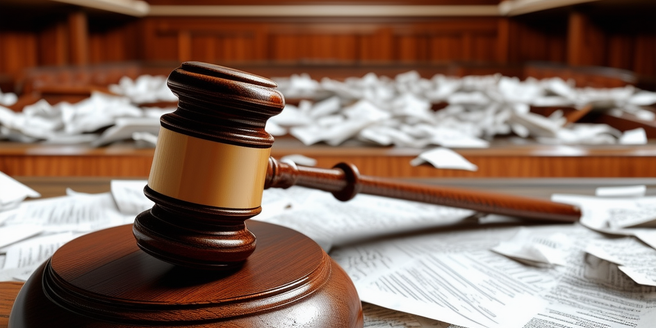
Understanding the Basic Mechanics of Class Action Lawsuits
A class action lawsuit is a tool allowing a collective of people, or ‘class’, to jointly pursue a singular legal action against an entity. This legal process unifies those who have experienced similar damages into a common front against the responsible party. The harm may be financial in cases where, for example, an insurance company engages in bad faith, making a class action lawsuit the most efficient solution for those wrongfully denied an insurance claim. Medical-related lawsuits can also emerge when widespread physical harm occurs, as when a pharmaceutical firm releases a harmful drug product without sufficient testing or failing to disclose severe side effects. These circumstances often become grounds for class action lawsuits. In such litigation, the affected group unites to hold the culpable firm accountable for their ill-condition. Thus, class action lawsuits are crucial for consumer protection, corporate accountability, and ensuring justice when multiple individuals are affected by a common cause.
Historical Overview of Class Action Lawsuits
Class action lawsuits, where a large group of people collectively bring a claim against an entity, first emerged in the mid-19th century U.S legal landscape. Specifically designed as legal tools to address multifaceted issues involving many claimants, these lawsuits have undergone numerous transformations. They have been instrumental in setting new standards for corporate responsibility and accountability, acting as a formidable check on corporations and pushing them to take responsibility for their actions.
Class action lawsuits contribute significantly to legal changes, policy shifts, and law amendments, influencing the legal landscape in multiple ways. Subject to such lawsuits, companies are held accountable not only for financial reparations but also for policy changes benefiting society. Consequently, these lawsuits have become avenues for justice for numerous claimants and mechanisms for societal and institutional law changes.
Through these lawsuits, communities can assert their rights and exert societal pressure on corporations to uphold moral and legal responsibilities. This has led to tangible changes in companies’ operations and business practices, enhancing corporate accountability and consumer protection. Therefore, class action lawsuits have firmly established themselves as influential tools in the U.S. legal system.
The Crucial Role of Plaintiffs in Class Action Lawsuits
Plaintiffs are the cornerstone of class action lawsuits and their role is such that they are at the forefront of this legal battle, representing thousands or even millions of other members within the class. As the spearhead of the lawsuit, they channel aggrieved voices unheard, taking the fight to corporations on behalf of a multitude. Though the legal team plays a significant role, the plaintiffs are the ones who personally represent the case to the public eye, bearing the weight of the collective class members’ hopes and expectations, and welcoming the legal strain. Their commitment, tenacity, and strength can essentially make or break these lawsuits, hence their selection is critical. The impact they have on the legal proceedings and eventual outcomes is considerably significant and far-reaching, with the potential to set lasting legal precediences and even change corporate behavior for the better.
Common Factors Triggering Class Action Lawsuits
Class action lawsuits usually arise from corporate misconduct, faulty products, bad faith insurance, and unfair employment practices. They are born from situations in which a company has wrongly acted, either intentionally or negligently. These lawsuits can be initiated for negligence, disregard for public safety, or gross mismanagement. Likewise, faulty products that are harmful or do not work as advertised can also lead to class action suits.
Furthermore, poor insurance practices, such as not honoring policy terms or trying to avoid paying claims, frequently initiate class action lawsuits. Inappropriate employment practices like widespread discrimination, underpayment of wages, or violation of labor laws can also incite these legal actions.
The primary factor behind initiating such lawsuits is the level of harm caused and the number of affected individuals. The injustice or injury must be considerable and widespread enough to merit a collective legal effort, often considering whether individual lawsuits would be impractical or inefficient. Thus, the severity and potential large-scale impact of an issue determines the validity of a class action lawsuit. Not every instance of wrongdoing or harm leads to a class action lawsuit.
Modern Trends and Dynamics Impacting Class Action Lawsuits
Over the past decade, trends and shifts influenced by technological advancements, legal changes, and evolving societal patterns have fundamentally influenced class action lawsuits. The use of modern-day technology has led to new areas of litigation such as data misuse and privacy breaches, compelling the legal system to adapt rapidly. Legal landscape shifts, driven by regulatory changes, law revisions, and court decisions, have reshaped the class action scene affecting how cases are presented, judicial decisions are made, and attorneys strategize. Societal trends, notably evolving consumer awareness of rights and modern business practices, have also had significant impacts on class action cases. In conclusion, as society, businesses, and laws continue to evolve, the nature of class action lawsuits will keep adapting to this trajectory of change.
